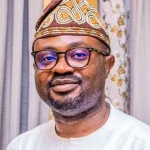
By Favour Oriaku
In Nigeria, a silent war is being waged, not with weapons, but with something far mightier—vaccines. The battle is against a formidable enemy, the circulating variant poliovirus type 2 (cVPV2), an adversary to the health of children and communities. However, in this modern age, our arsenal includes not just medicine but also advanced technology. Among these technological advancements, the Geospatial Tracking System (GTS) shines as a beacon of hope, guiding the way towards a polio-free future. Nnenna Ohiaeri, the Project Manager at eHealth Africa, sheds light on the GTS project. It’s a two-part initiative focused on supporting immunization efforts nationwide. The project complements the work of The National Primary Health Care Development Agency (NPHCDA), The World Health Organization (WHO), The United Nations Children’s Fund (UNICEF), and Global Polio Eradication partners in their quest to interrupt cVPV2 transmission.
The goal of this innovative project, implemented by eHealth Africa in partnership with National Primary Health Care Development Agency (NPHCDA) and implementing partners in polio, is precise yet monumental: to provide support towards the eradication of cVPV2 by ensuring no child or settlement is missed during vaccination campaigns. To achieve this, eHealth Africa harnesses the power of GIS tracking and meticulous data collection, tools that transform the vast, populous landscape into a detailed map leading health workers to every settlement—no matter how remote.
Dr. Kabir Suleiman, from the Katsina State Primary Health Care Development Agency, speaks with the conviction of someone on the frontlines: “I believe it’s crucial and of utmost importance to maintain this initiative. When we emphasize quality and accountability, Geographic Information Systems (GIS) becomes an essential tool. It enables close monitoring of campaigns, which is instrumental in ensuring the success of our activities.” His words resonate with the urgency and importance of this cause. It’s not just about dots on a map; it’s about reaching real people in real places in real-time.
This sense of transformation echoes in the experience shared by Mainasara Ambayya, a State Immunization Officer in Zamfara State. “Before the introduction of the GTS project, we encountered significant challenges in tracking our teams during Supplementary Immunization Activities (SIAs). The introduction of these trackers provided us with valuable insights into the settlements that were addressed and the extent of coverage, whether it was partial, full, or complete. This technology has been instrumental in enhancing our understanding of the SIA process.” For Ambayya, the GTS isn’t just a system; it’s a window to visibility and accountability, crucial factors in the pursuit of a comprehensive vaccination campaign.
Echoing this sentiment, Aliyu Abdullahi, a Local Immunization Officer in Zamfara State, highlights a groundbreaking achievement: “The updated masterlist of settlements has enabled us to identify numerous settlements in Gusau that were previously unknown. After the master list of settlements was updated, the LGA successfully identified approximately 80 new settlements in Gusau LGA.” Imagine, 80 communities once invisible, now acknowledged, known, and most importantly, protected.
These are not mere numbers or statistics. These are children, families, futures—all safeguarded from the crippling grasp of polio. Behind every geo-coordinate collected, there are human stories, tales of hope, health, and life.
According to the Project Manager, Nnenna Ohiaeri, some of the successes already recorded include, “Over 11,000 vaccination teams were tracked during 3 phases of the novel fIPV+nOPV campaign across 10 states: Borno, FCT, Jigawa, Kaduna, Kano, Katsina, Kebbi, Niger, Sokoto and Zamfara. 50,000+ settlements were confirmed visited by the vaccination teams using GTS. Additionally, with the update to the MLoS settlements of 6 states: Kaduna, Katsina, Kebbi, Niger, Sokoto and Zamfara, 31,000 geo coordinates were collected between May and September 2023, with the percentage of settlements in the 6 states with geo coordinates increasing from 55.13% at baseline to an impressive 93.05%.
As the GTS project continues to chart its course through the terrains of Nigeria, it carries with it the promise of a nation where no child has to face the threat of cVPV2. It’s a testament to the power of innovation, the strength of human resolve, and the unyielding belief that we can, and we will, usher in a healthier future for all. Through the fusion of technology and humanity, we are not just contributing our bit toward eradicating polio; we are paving the way for global health security and resilience; one vaccination, one child, one geo-coordinate at a time.
Favour Oriaku
eHealth Africa, Nigeria










